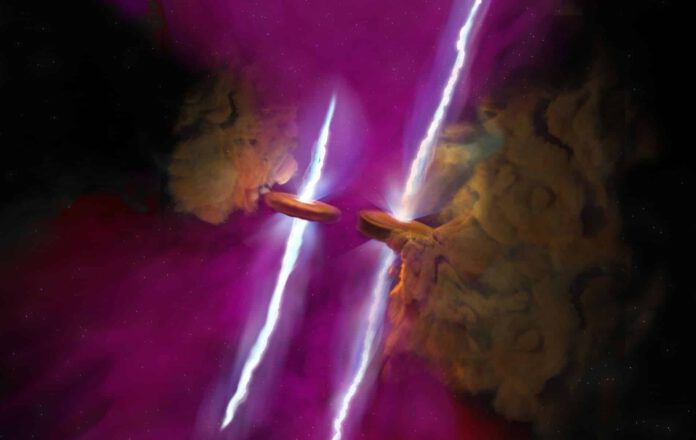
James Webb Space Telescope Reveals New Insights
The James Webb Space Telescope has unveiled that WL 20S, previously considered a single star, is actually a binary star system.
A Closer Look at the Rho Ophiuchi Region
About 400 light-years from Earth, within a massive gas and dust cloud, lies the well-studied star-forming region known as Rho Ophiuchi. By zooming in further, we find the group of young stars called WL 20. This area has been studied with at least five telescopes since the 1970s. Researchers believed they had a comprehensive understanding of the area, but new observations using the James Webb Telescope reveal that astronomers had overlooked a crucial detail.
A Surprising Discovery
When the James Webb Telescope focused on WL 20, researchers were surprised. What was thought to be a single star within this group, WL 20S, turns out to be a binary star that formed around 2 million to 4 million years ago. This discovery was made possible by Webb’s Mid-Infrared Instrument (MIRI), which also revealed matching gas jets emanating from the north and south poles of the binary stars.
Awe and Astonishment
The discoverers were astounded. “Our jaws dropped,” said lead researcher Mary Barsony. “After decades of research, we thought we were quite familiar with this area. However, without MIRI, we would not have known that it was actually two stars or that these jets existed. This is truly amazing.”
Potential Planet Formation
The team was further surprised when additional observations were made with the Atacama Large Millimeter/submillimeter Array (ALMA). These observations revealed that both stars are surrounded by dust and gas disks. Given the age of the stars, it is possible that planets are forming within these disks.
Transition Phase
The combined results show that the stars are entering the final stage of their early life. This provides scientists with an opportunity to learn more about the transition from youth to maturity in stars. ALMA can also detect clouds of leftover formation material around young stars. These clouds consist of gas and dust and contain complete molecules like carbon monoxide, which emit light at longer wavelengths. The absence of these clouds in the ALMA data indicates that the stars are beyond their initial formation phase.
Power of Combined Instruments
“The power of these two telescopes together is truly incredible,” said researcher Mike Ressler. “Had we not established that there were two stars, we might have assumed based solely on the ALMA results that it was a single disk with a gap in the middle. Now we have new information about two stars clearly in a crucial phase of their development, with the formation processes gradually winding down.”
Thick Clouds
How could WL 20 have been so thoroughly studied yet the binary star not previously noticed? WL 20 is located behind thick clouds of gas and dust that block most visible light, which is what the human eye perceives. The James Webb Telescope detects longer wavelengths, known as infrared, which can penetrate these layers. The MIRI instrument on Webb is specially designed to detect the longest infrared wavelengths, making it well-suited to peer through obscured star-forming regions like WL 20.
The findings highlight once again the invaluable role of the James Webb Telescope, the world’s premier observatory, which promises to solve numerous mysteries and offer profound insights into the origins of our universe. It is expected that the telescope will answer critical questions and drastically change our perception of the universe and its evolution. At this moment, the telescope indeed appears to be right on track to fulfill this promise. Without the telescope, we would never have unraveled the true nature of WL 20S. “It’s fascinating that this region can still teach us so much about the life cycle of stars,” said Ressler. “I am really looking forward to discovering what more Webb will reveal.”











